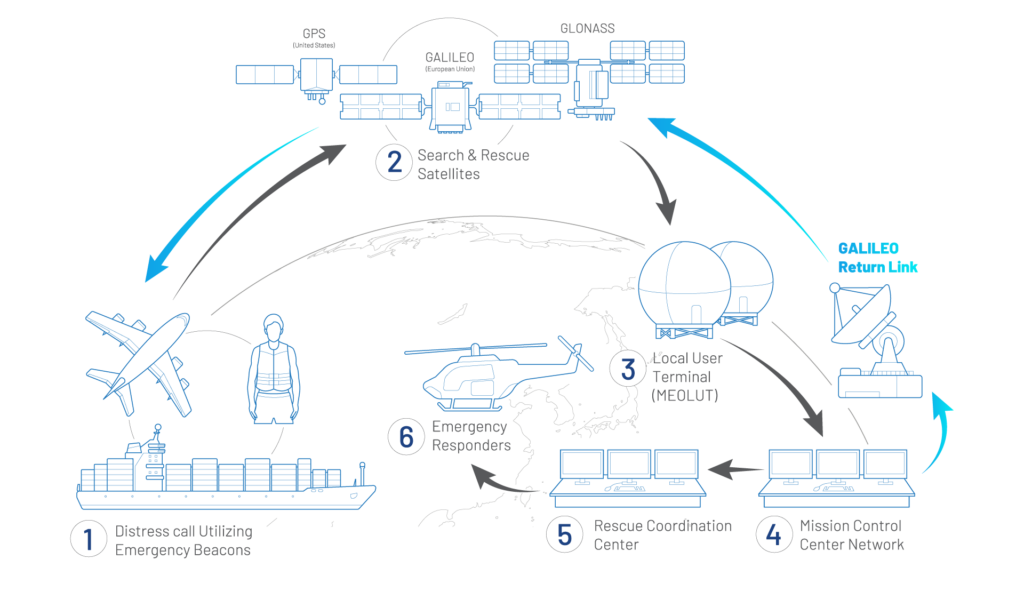The addition of GPS receivers into 406MHz search and rescue beacons in the 2000s was the biggest shake up of the international search and rescue system since the activation of the global Cospas Sarsat distress alerting satellite network in 1981. By including GPS recivers beacons reduced the search location from square miles to an exact location coordinate typically accurate to within 100 meters.
This technology leap opened the door for a range of recovery devices which utilise near real time location detection to reduce time in the water, including GPS EPIRBs / PLBs, AIS SARTs in the 1990s and AIS MOB’s in 2012.
The new Galileo GNSS satellites, launched as part of the Cospas Sarsat upgrade program MEOSAR, now consists of 26 satellites of a planned 30. The new system reached its operational phase in 2017, allowing technology with a Galileo-enabled receiver to use signals provided by its satellites for positioning, but on completion the Galileo constellation will offer the next technological evolution in life saving technology, the Return Link System or RLS.
 Galileo’s RLS works by sending a signal back through the Cospas Sarsat network to confirm to the beacon user that the distress alert from a beacon has be received, the location has been confirmed and the rescue process is underway.
Galileo’s RLS works by sending a signal back through the Cospas Sarsat network to confirm to the beacon user that the distress alert from a beacon has be received, the location has been confirmed and the rescue process is underway.
RLS is referred to by its’ European creators as the addition of a ‘reassurance’ signal’, in the form of a blue indication light, on Galileo RLS enabled search and rescue beacons. However, its impact could equal that of the introduction of GPS in surviving emergencies; not by accelerating the rescue process; but by influencing the decision-making of those in life-threatening situations on land, sea or in the air.
Numerous studies have documented the positive impact on survivors of knowing the outside world is aware of their situation, that help is on its way. Decision making and risk taking are often weighted up against an individual’s perception of survival. We have seen too many situations where people have left crash sites or attempted to swim to safety because they felt they had no other choice, The blue light of RLS means all is not lost, hold on, help is coming.
As with previous lifesaving innovations, adoption and understanding are key, those in maritime safety should assess mandated safety equipment to understand how RLS could benefit and investigate if national approvals are required. Organisations should access if the advice provided for emergencies is still effective, does the ‘blue light’ require different behaviour? does the ‘re-assurance’ signal impact groups and those on their own differently?
Continued end user education is essential, not only on the importance of the blue light, but in the value of upgrading antiquated equipment to reflect the accelerated detection and reassurance capabilities that Galileo will add to the latest search and rescue beacons.
In 2020 RLS will transform the uniquely powerful 406MHz search and rescue distress signal into an unconventional two-way solution, provide comfort for stranded hikers, hope for the ship wreaked and relief for crash survivors, will you be ready.